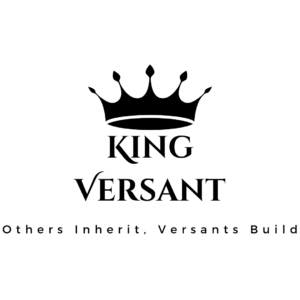Summary of the Briefing: President Trump's Section 232 Tariffs
Date Published: February 11, 2025
Key Points:
- President Donald J. Trump reinstated a 25% tariff on steel imports and elevated aluminum tariffs to 25% to protect U.S. industries.
- These tariffs are a continuation of policies from his first term, aimed at countering foreign trade violations and import surges.
- Industry leaders, labor unions, and Republican lawmakers overwhelmingly support the decision.
- The tariffs target countries like China and Mexico, accused of flooding the U.S. market with subsidized and unfairly traded steel and aluminum.
- The administration argues these tariffs will protect American jobs, enhance national security, and strengthen domestic manufacturing.
- Critics raise concerns about potential rising costs for consumers and retaliation from trade partners.
Pros and Cons of the Tariffs (U.S. Perspective)
Pros:
✅ Protects American Jobs – Ensures U.S. steel and aluminum workers remain competitive by reducing foreign dumping.
✅ Strengthens National Security – Reduces dependency on foreign metals for critical industries like defense and infrastructure.
✅ Encourages Domestic Investment – Manufacturers may be more willing to invest in U.S. steel and aluminum production.
✅ Levels the Playing Field – Addresses trade imbalances and punishes nations that circumvent fair trade laws.
✅ Historical Success – Advocates argue that similar tariffs in Trump’s first term led to job growth and economic expansion in the sector.
Cons:
❌ Higher Costs for Consumers – Industries relying on steel and aluminum, such as construction, automotive, and manufacturing, may face higher production costs, leading to increased prices for consumers.
❌ Retaliatory Tariffs – Other nations may impose tariffs on American goods, hurting farmers and other exporters.
❌ Tensions with Trade Partners – Countries like Canada, Mexico, and China may view the move as aggressive trade policy, straining diplomatic relations.
❌ Potential Job Losses in Other Sectors – While the metal industry benefits, downstream industries (e.g., auto manufacturers) might lose jobs due to increased material costs.
❌ Risk of Inflation – Higher costs in key industries could contribute to broader inflation, impacting average American households.
Pros and Cons of the Tariffs (Global Perspective)
Pros:
🌍 Encourages Fair Trade – Foreign producers may be forced to comply with international trade laws, reducing unfair competition.
🌍 Potential Market Opportunities for Other Countries – Some nations not affected by the tariffs could see a rise in demand for their steel and aluminum.
🌍 Encourages Investment in Domestic Industries Globally – Countries that export to the U.S. may focus on developing their own steel and aluminum production.
Cons:
🌍 Strains Global Trade Relations – U.S. allies like Canada and Mexico are affected, potentially leading to retaliatory actions.
🌍 Economic Slowdowns in Affected Countries – Countries dependent on U.S. metal exports (e.g., China, Mexico, and Canada) could see reduced revenues and job losses.
🌍 Global Price Volatility – Supply chain disruptions may cause price spikes in steel and aluminum worldwide.
🌍 Encourages Protectionism – Other nations may implement similar tariffs, leading to a global trade war.
🌍 Shifts Trade Alliances – Some U.S. allies might look to alternative markets (e.g., China or the EU) for trade agreements.
Factual Narrative: Understanding the Impact of the Tariffs
President Trump’s reinstated 25% tariffs on steel and aluminum imports mark a significant step in his “America First” trade policy. Supporters argue these measures combat unfair trade practices, particularly from China, Mexico, and Canada, while protecting domestic industries and securing American jobs.
The tariffs were met with widespread approval from U.S. industry leaders and Republican lawmakers, who view them as a necessary defense against foreign market distortions. Organizations like the Steel Manufacturers Association, United Steelworkers, and American Iron and Steel Institute praised the move for curbing overcapacity and illegal dumping.
However, the decision raises concerns about potential economic consequences. Industries reliant on steel and aluminum—such as automobiles, construction, and manufacturing—could see higher costs, potentially leading to price hikes for consumers. Additionally, trade partners may retaliate with tariffs on American exports, affecting U.S. farmers, manufacturers, and multinational businesses.
From a global perspective, the tariffs could shift international trade alliances, with Canada, Mexico, and China seeking alternative markets to avoid economic losses. Some argue that the move encourages protectionism and could lead to a broader trade war, while others see it as a necessary correction to global trade imbalances.
As the situation unfolds, the effectiveness of these tariffs will depend on how the global market reacts, how trade partners respond, and whether domestic industries capitalize on the protectionist measures.
